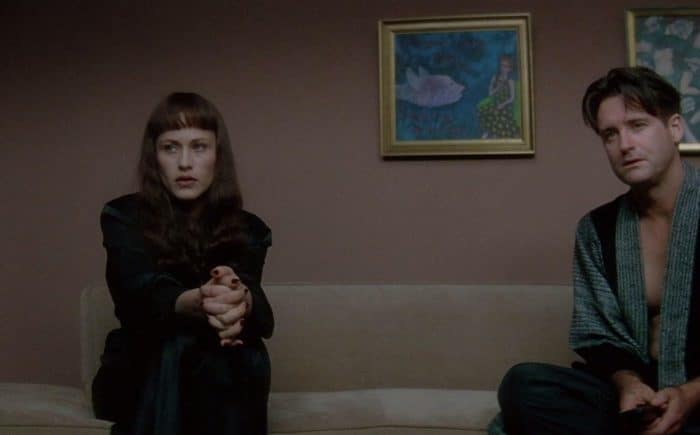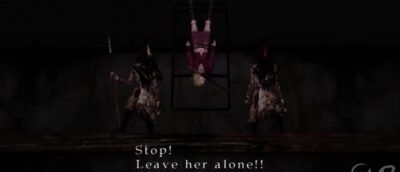I like to remember things my own way…not necessarily, the way they happened.
This quote could easily be Fred Madison’s—the lead character of David Lynch’s Lost Highway—main catchphrase. But it also applies to James Sunderland of Silent Hill 2, a game which takes heavy inspiration from Lost Highway. Both characters have a knack for lying to themselves and attempting to escape the truth. Especially when it comes to the murder of their own wives.
Fred Madison is definitely one of Lynch’s more flawed anti-heroes, and I’ve read many interpretations of Silent Hill 2 that vary between their reaction towards James. But can either of these characters be seen as sympathetic? Or are we to see them as outright monsters who are wholly irredeemable? To answer this question, we need to examine the motivation behind Fred and James murders and their relationship with their wives and their doubles, Renee/Alice, and Mary/Maria.
Fred’s Motivation
Fred is already caught in a never-ending cycle of punishment, implied by the Mobius-strip like structure of the film. When he receives the videotapes in the mail, Renee is still alive, at least in this reality. Yet there is clearly a reason his house is being video-taped, and the mystery man is following him. He’s already killed Renee is a previous timeline. By the time Fred finally sees the tape that shows the murder of his wife, Renee has ceased to exist.
Fred’s final few interactions with his wife before her death speaks volumes. The relationship between the couple is strained to the extreme. Their conversations with each other are cold and stilted, and they sit far apart from each other when they’re on the couch.

This coldness carries over into the couple’s sex life. Fred’s attempts to arouse Renee fail and he receives a diminutive pat on the shoulder from Renee, coupled with an “It’s okay” from his wife. This leaves him in an intense state of sexual frustration.
But the most telling few scenes that show viewers why Fred kills Renee come near the end of the film. In Andy’s mansion, Pete finds a picture of Renee and Alice alongside Mr Eddy. Confused by the double of his girlfriend, Pete asks Alice, “Is this you? Are both of them you?” She replies with, “That’s me,” pointing at her picture.
Pete gets a nosebleed, a telling sign that his fantasy world is collapsing. He makes his way upstairs to find the bathroom, only for the world to transform on him into the Lost Highway Hotel. He opens the door to room #26 to find Renee appearing in a vision teasing him, “Did you want to talk to me? Did you want to ask me why?”
https://www.youtube.com/watch?v=34RGJMqQEV4
Renee reveals her betrayal soon afterwards. After the sex scene in the desert, in which Alice taunts an enraptured Pete with, “You’ll never have me,” he transforms back into Fred. He discovers Renee and Mr Eddy sleeping together in room 26 of the Lost Highway Hotel. Laurent and Renee were having an affair. Fred’s jealousy leads him to murder Mr Eddy, and he kills Renee for the same reason. A monster indeed.
James’ Motivation
James’ reason for killing Mary is less conclusive, due to the game having multiple endings. Yet one thing is clear: James faces up to his sin in a more admirable way than Fred ever does (at least at first). After James views the videotape in his and Mary’s old hotel room, he faces the inevitable truth; he killed Mary. He admits that he is weak when facing the final pyramid heads, that he needed someone to “punish him for his sins.”
This statement implies a heavy level of guilt on James’ part. We learn that the pyramid heads, and their continual killing of Maria, are literal physical manifestations of James’ own need to punish himself. Like the Mystery Man, the Pyramid heads are a stand-in for truth but aside from Fred’s screaming, “Tell Me, I didn’t kill her!” he never stops running from his guilt.

But James’ story isn’t quite over yet. After he kills the pyramid heads, he heads a through a hallway where a conversation between him and Mary plays. In the dialogue, James brings Mary some flowers, only for Mary to berate James and then beg him to stay. We can assume this conversation takes place near the end of Mary’s sickness, as James leaves the hotel room and does not return.
After the conversation, James heads upstairs to the top of the roof and finds either Maria or Mary. If James treated Maria poorly throughout the game, stayed for the conversation, and continually examined Mary’s picture, the game takes this as a sign that James truly loves Mary. James then confronts Maria in a final battle. However, if James cared for Maria, and didn’t examine Mary’s letter and picture, James fights Mary herself.
One of three standard endings occur after the battle: “Maria,” “Leave,” or “In Water.” The first ending, “Maria” features James leaving with Maria, only to notice that Mary’s sickness is going to reoccur in her. James has clearly not learned his lesson. The same process will repeat again, and James will find himself in a perpetual hell of his own making.
But “Leave” and “In Water” leaves gamers with a completely different take on James’ character. In “Leave,” James asks for Mary’s forgiveness. Mary tells James that she wanted to die, “wanted the pain to end.” “That’s why I did it, honey,” James replies,” I just couldn’t watch you suffer.” But then he admits, “The truth is, I hated you, I wanted you out of the way. I wanted my life back.” Mary replies, “James, if that were true, then why do you look so sad?” In this ending, James’ reason for killing Mary is a mixture of his own frustration and his pain at watching Mary suffer.
This exchange is slightly different in “In Water.” Mary does not encourage James: “You killed me and now are suffering for it, that’s enough.” This ending definitely paints James as more of a monster than “Leave” does.
Who’s the Monster?
Fred seems the more monstrous of the two characters. He continually runs from his guilt, and we never see him openly express any love for Renee. But the open-ended nature of Silent Hill 2 with its multiple endings leaves room open for a darker interpretation of James. Certainly, a man who kills his wife and leaves with her dark double is not innocent. In the end, it all comes down to player choice.
“Leave” is my preferred ending for Silent Hill 2. I choose to see James as a good man who committed a terrible sin. I have zero sympathy for Fred. He gets what he deserves, whether that is the electric chair or a never-ending cycle of pain.



